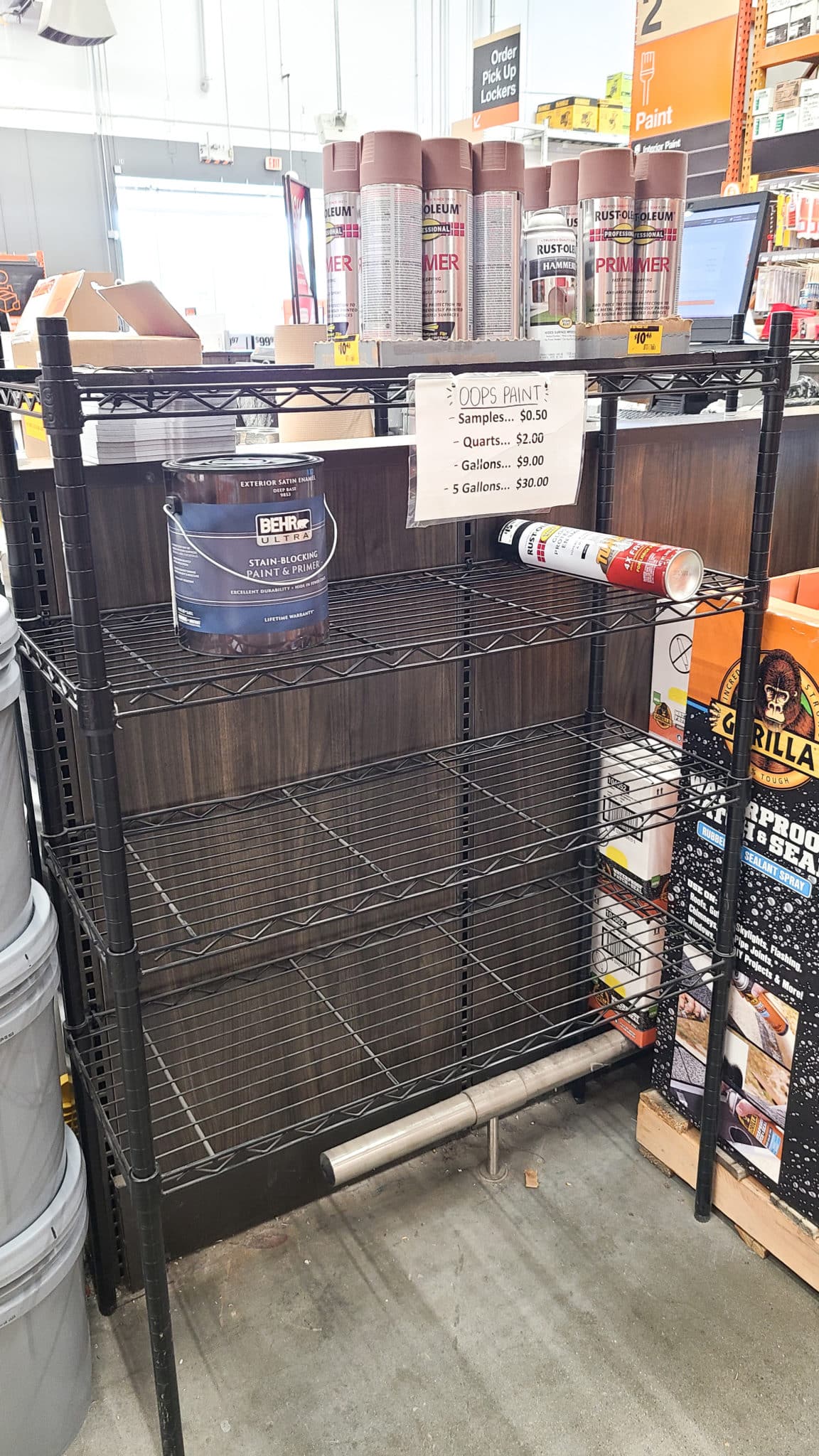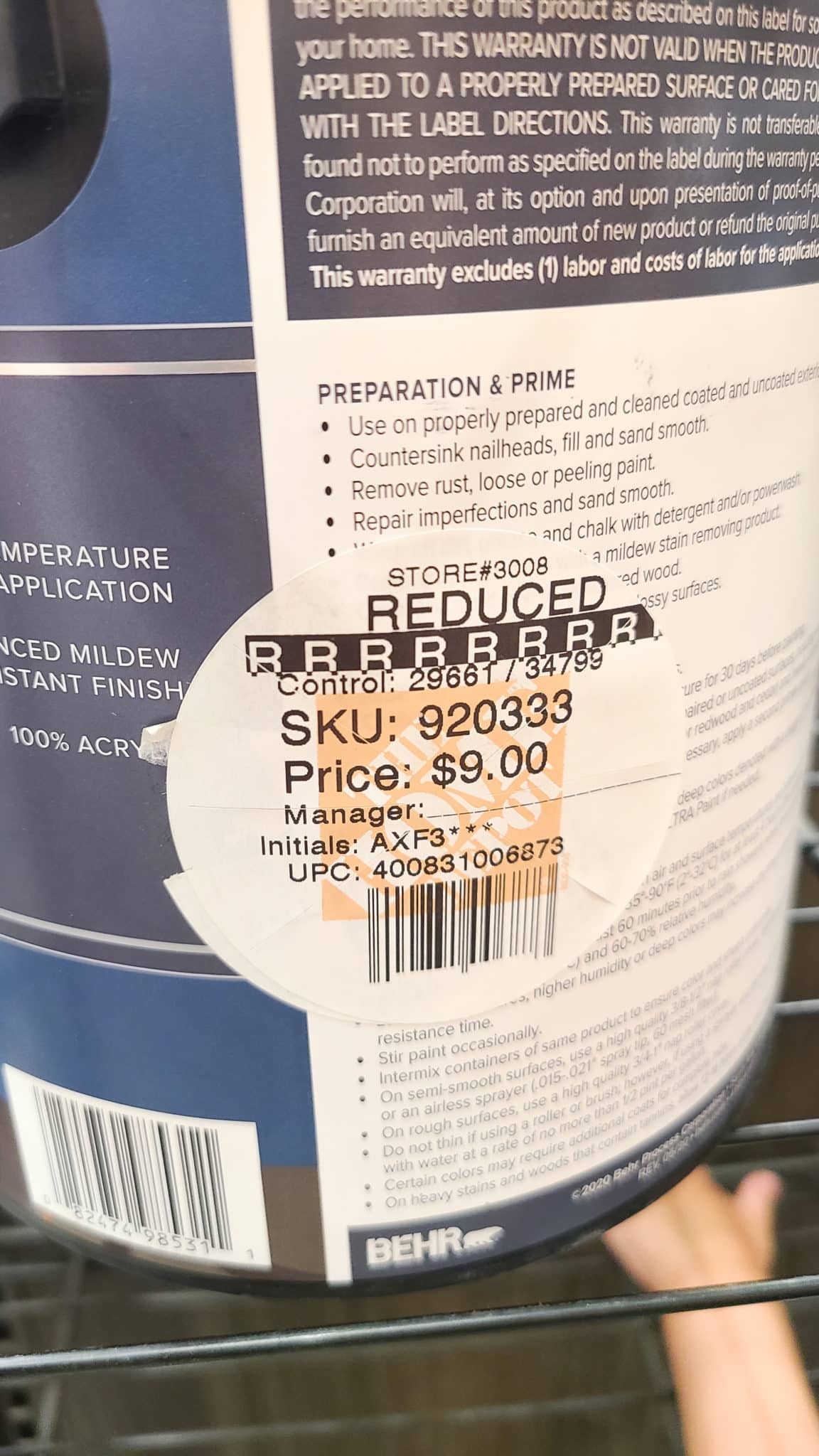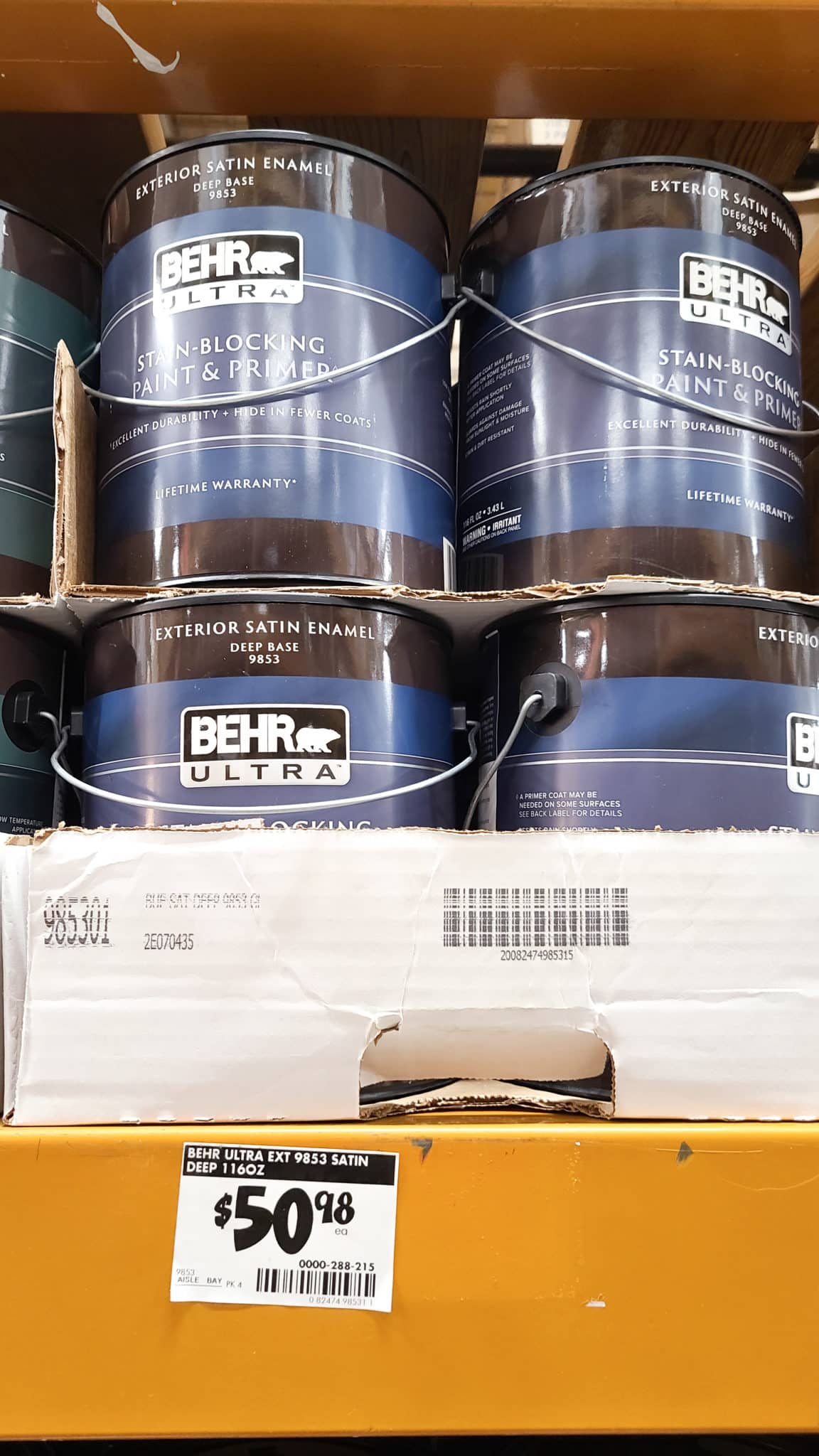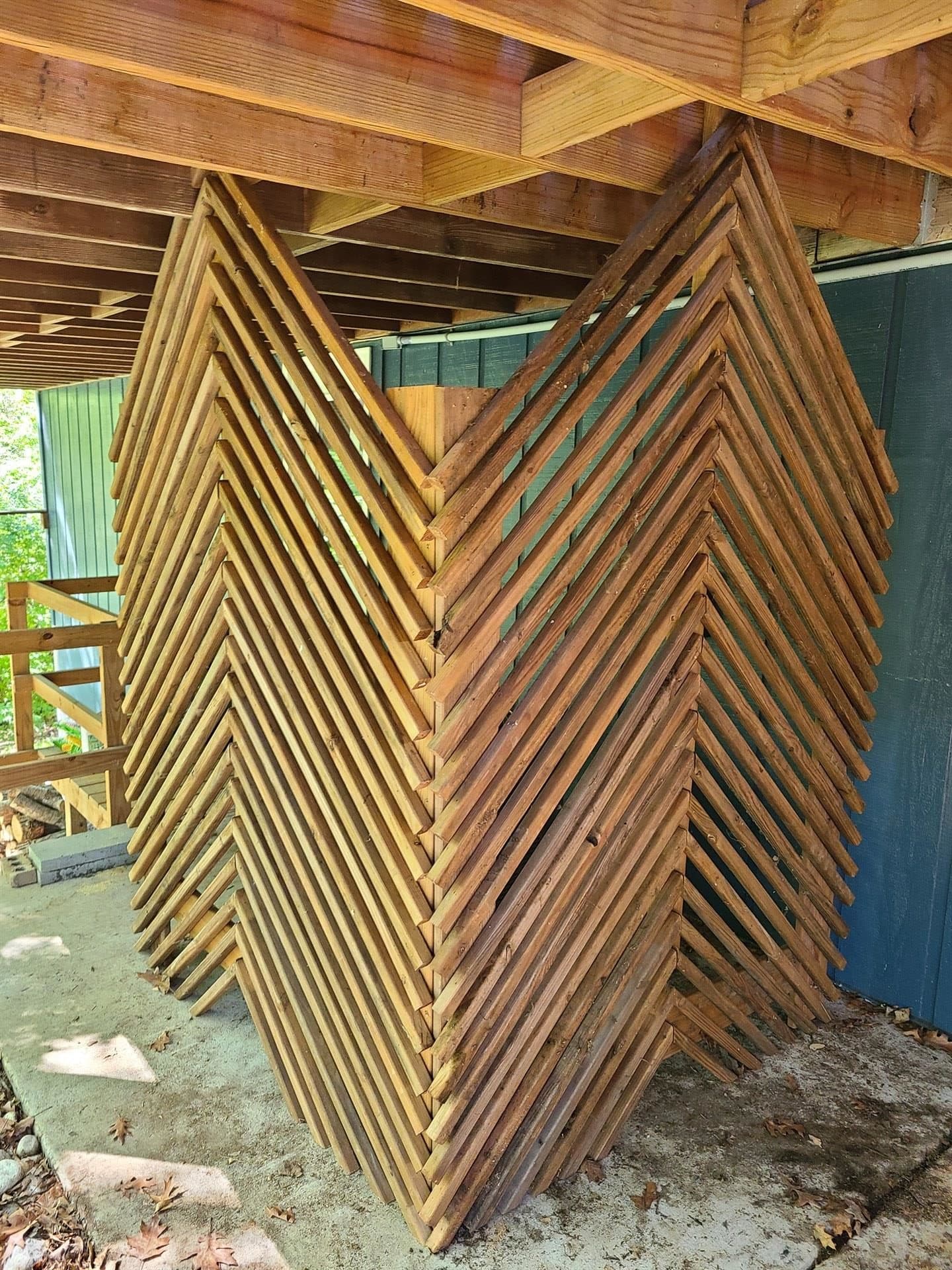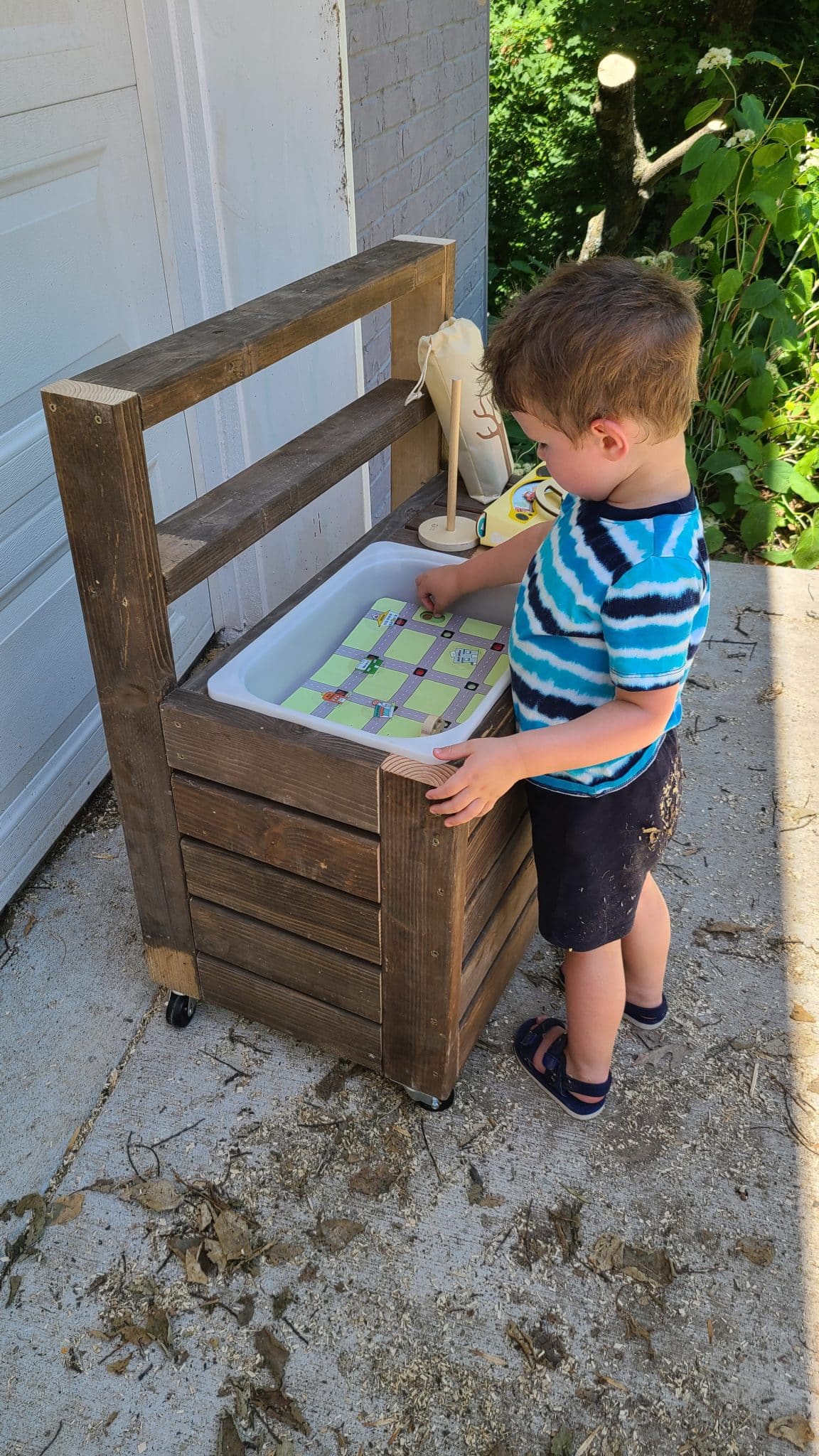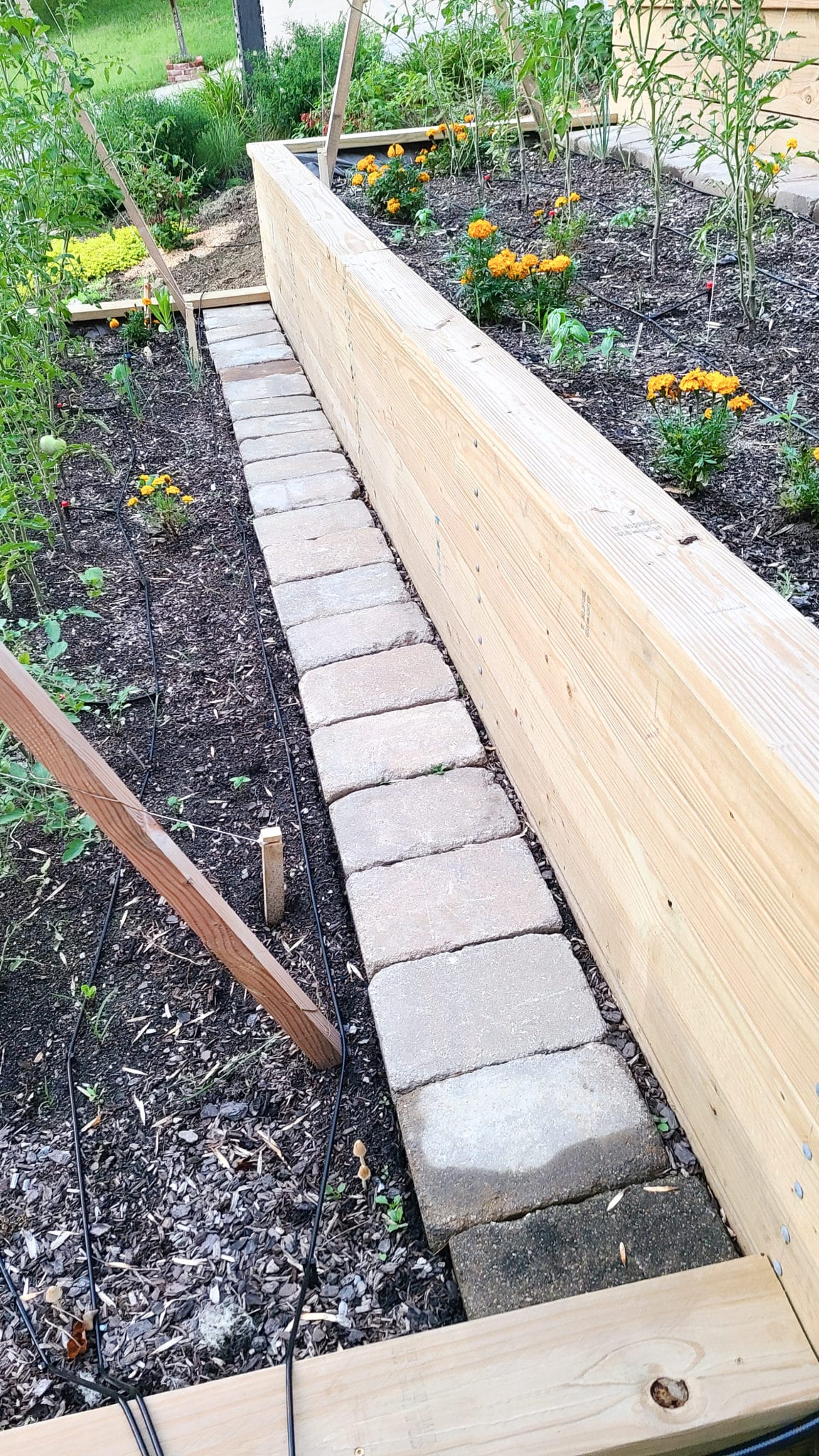How To DIY Sustainably -Tips & Ideas
DIY projects can save you money, teach you new skills, and create beautiful designs. They can also help the environment by doing your project in a more eco-friendly way. In this post, we’ll cover some tips and ideas on how to DIY sustainably.

Disclaimer: This post includes affiliate links, and I will earn a commission if you purchase through these links. Read about our privacy policy.
So why DIY instead of just buying a product or paying a contractor? DIYing means the design outcome is typically exactly what’s desired and often can save money. Additionally, DIYing has so many benefits like learning new skills, growing confidence in your abilities and discovering new passions.
Another key reason DIY projects are great is because the amount of waste can be controlled and minimized. Moreover, you can use eco-friendly products that contractors may not be willing to do. DIY projects are a great way to continue a sustainable living journey and make really awesome things!
It’s all a balance of what you’re willing to try and the budget. But learning new skills, saving money, and having full control seem like great wins to us!
DIY Sustainably Tips & Eco-friendly Projects
Why is it important to DIY sustainably?
Have you ever seen construction projects or even home projects where you see so much being wasted and put into the trash? The Environmental Protection Agency (EPA) estimated 600 million tons of construction and demolition debris were generated in 2018. There’s a need for sustainable construction management as many of the materials can be reused or recycled into something else instead of filling a landfill.
In contrast, a DIYer has the choice to make their project more eco-friendly because they have control.
So here are some tips to make your DIY projects more eco-friendly by creating a plan, being less wasteful, using eco-friendly building materials, and reusing as much as possible. Time to DIY sustainably!
Create An Inspiration Board & A Plan
The best way to DIY sustainably is to only get what you need, minimize waste, and use sustainable materials, if possible. We’ve found the best way to do that is to first find inspiration and then create a project plan.
Find Inspiration & Examples
Some people, including ourselves, are highly visual people. So making a “mood” board or inspiration board can really help to plan out your project. It’s simply finding a bunch of imagery of spaces or products to fit the desired project look. Pinterest is a great place to get lots of ideas fast, and helps you find similar but slightly different ideas as well.
We’ll typically even go a step further to model our ideas in 3D using Sketchup or Photoshop. Or create full DIY woodworking plans with a materials list for any furniture we’re making to share with other DIYer, so they can make them too!
Planning A DIY Project
By doing a little planning you can create a DIY project budget to stick to. Using your inspiration and/or plans, make a list of all the possible materials you’d need to complete the project yourself. A spreadsheet is great for list making and budget creation (cue my nerdy amazing spreadsheet-loving husband!).
Once you create a materials list or use one from a set of plans, then assign a price to each item. Typically a quick internet search of stores will give you a cost. You can use a high and low range method if it’s a really big DIY project and you need some flexibility.
Assess the total cost and decide if any adjustments need to be made. Search for a different product or note you need to find a cheaper option to fit your budget.
In the end, the plan is a guide and costs might fluctuate. No one’s perfect, but your wallet will thank you later. And so will the environment because having a plan helps minimize waste and unnecessary items.
Demoing Properly
Starting a DIY project, especially a renovation one, can start with needing some demolition. Instead of taking a full on sledge hammer to everything, it’s best to actually use a deconstruction method. By carefully removing anything, the process can be less wasteful and leave you with items to sell, reuse, or donate.
If it’s a light fixture or other item in a good condition, then possibly try selling it (make money instead of spend it!). Save any wood for reuse and donate cabinets, faucets, lights and other items to places like Habitat for Humanity Restore. Then properly recycle any materials that can’t be donated or reused.
Check out the reusing demoed material tip further down for ideas on how to reuse it for new DIY projects and save you even more money!
Use Sustainable Materials & Products
Many eco-friendly or sustainable materials might have a slightly higher upfront cost. This is often because demand for these products is lower and they may cost more to produce. However, that does seem to be changing year to year. Personally, we always try to be eco-conscious buyers and use our purchases as a vote for products we want to see more of. If we create demand, then there might be a better balance with supplies and cost.
With that said, DIY projects will save you the cost of a contractor or paying the profit margin for a product, so spending a little more on quality eco-friendly materials is still typically less than paying someone else to do it. Totally worth it for all these reasons to us!
Forest Stewardship Council (FSC) Certified Wood
Wood lumber is one of the most commonly used materials for a lot of DIYers. All our DIY plans we make are almost guaranteed to have some type of woodworking involved.
However, a lot of wood can be irresponsibly removed and create poorly managed forests. That’s where the Forest Stewardship Council steps in as a non-profit who sets high standards for forestry practices that are both socially beneficial and environmentally responsible.
What are FSC wood products and why is it important?
Lumber or paper products that have the FSC certification labels means the product has been certified by the Forest Stewardship Council to meet their “gold standard” for wood harvest from forests that are responsibly managed and meet ethical production standards.
Choosing FSC certified products is important to help reduce climate change through the promotion of responsible forest management and wood and paper recycling. The FSC also recognizes and protects the rights of indigenuous communities preventing tree removal from sacred sites and forests around the world.
Three FSC certifications labels for wood products
- FSC 100% – identifies products made from 100% virgin materials from FSC-certified forests
- FSC Recycled – identifies products made with 100% recycled fiber both pre-consumer and post-consumer.
- FSC Mix – identifies products made with a combination of FSC certified virgin wood, recycled/reclaimed fibers, and FSC controlled wood.



Credit – Forest Stewardship Council
Where to buy FSC certified wood
FSC certified products can be found at many typical home improvement stores like Lowe’s, Home Depot, or retailers like Lumber Liquidators. There are even FSC certified products available on Amazon (less DIY based products, but household paper products and furniture).
Decking, flooring, furniture, and even toilet paper can have a FSC certification. So consider this beyond simple DIY projects as well, and when you’re trying to make more eco-friendly purchases.
Eco-friendly Paints
Another major product DIYers use is paint. Painting can do so much to transform a room, piece of furniture or even a small object. However, according to Green America, many paints are made with volatile organic compounds (VOCs), which are chemicals that evaporate at room temperature producing gas (off-gassing) back into the air while the paint dries. This can be harmful to the environment as well as dangerous to breathe in. Additionally, Green America notes that many paints and stains can contain fungicides, biocides, and toxic chemical pigments.
But don’t worry, it’s not hard to DIY sustainably with paint! Here are a few paint brands we know that are low-VOC or VOC-free paint:
- Behr Premium Plus – low VOC, interior/exterior, look for the ones with Greenguard certification, found in stores
- Valspar Simplicity – low VOC and VOC-free options, interior/exterior, look for the ones with Greenguard certification, found in stores
- Real Milk Paint – VOC-free, 56 colors, interior/exterior, biodegradable/compostable paint, online only
- Clare – VOC-free, Greenguard gold certified, interior/exterior, online and direct-to-consumer only
Look for Label Certification
If browsing for an eco-friendly paint, then look for certification that lets you know what’s in the product and the amount of emissions. Here’s a few labels you’ll typically find:
- Greenguard Certification – limits the amount of emissions a product can give off with two certification levels. Gold certification has health-based criteria accounting for chemically sensitive individuals like babies and kids and is considered child-safe and best for school environments.
- Green Wise – gold certificated products contain less than 5 grams VOC per liter, even after tinting with specified colorants.
- Declare Label – tells a consumer where a product comes from, what it is made of, and where it goes at the end of its life.
Many of the eco-friendly or VOC-free paints can be more expensive than typical paint, so find one that works for your DIY budget.
Check the Clearance Rack
Knowing all that and how costly paint can be, there is another eco-friendly option. One of the best places to look for paint while on a budget is the clearance paint rack at your home improvement store. It’s typically by the paint mixing counter with a random assortment of paint.
It’s great if you aren’t dead set on a color and don’t need multiple gallons. It works great for accent walls or painted murals. Even if the paint isn’t VOC-free, I’d still consider buying it if I’ll actually use it because that keeps it out of the landfill. Sustainable living and eco-friendly DIY is a balance. You can also ask them to add additional tint to the paint to try and get a closer match to what you want. It isn’t an exact science though since it will already have been tinted once.
Source Secondhand Products
Secondhand products are a great way to eco-friendly DIY. Like thrifting and most secondhand shopping, it takes a little more leg work to find a quality material that works for the project. However, that said, it can score you some unique pieces.
- Do a quick internet search for architectural salvage stores nearby for great secondhand pieces. Stick to your budget though as some salvage store items can cost a pretty penny.
- Ebay, FB Marketplace, and other secondhand retailers can have a ton of unique materials that are great for DIY projects and renovations.
- Find an item that has potential to be exactly like your inspiration image. Then DIY it with spray paint, stain or new hardware to match. Yay mini DIY!
Sustainable Renovation Choices
If your DIY project falls more along the lines of a renovation project, then consider some sustainable choices. Beyond wood there are other sustainable materials to consider. Some companies make glass and resin countertops to use leftover glass. Bamboo is a great sustainable material too as it’s fast-growing and durable.
Bathroom renovations – choose low-flow plumbing fixtures and products with WaterSense labels for better water efficiency. A dual flow toilet or low-flow shower head are great eco-friendly renovation swaps
Attic Insulation – use a natural fiber-based insulation with a high R value to better help insulation your home and lower your energy bill.
Appliances – When an appliance has reached the end of it’s life and it’s time to replace it, be sure to choose an energy efficient replacement and see that the old one gets recycled or scrapped properly.
Tools – When doing renovations, you will need tools. If it is a tool that you will use multiple times, it is often better for your wallet and the planet to pick one from a reliable brand so that you know it will last over time. Check out our Shop for recommendations.
Minimize Waste
Another way to DIY sustainably is to minimize your waste by starting with zero or low waste designs, reusing demoed material, and collecting and reusing scraps.
Find or create designs that have zero waste or low waste
If you buy a product, then you’re never quite sure how much excess materials were leftover and how they were disposed of. DIY projects can let you have control over the design. Look for companies that promote low waste production or zero waste designs. Or even create your own design to minimize the waste!
For our toddler’s playroom, we designed and created storage shelf plans to use a sheet of plywood, but then we modified our build and nested in two slides for our toddler’s pickler ladder so that we could use all of two 4×8 pieces of plywood. All of it! So no wood or money was wasted. Finding or creating designs is a great way to ensure you have little to nothing leftover and DIY sustainably.

Reuse demoed materials
Remember all those demoed materials from a previous DIY project? Well you might be able to reuse that demoed material for a new DIY project! We almost always “shop” our house first to see what we have for a DIY project idea. It helps reuse materials laying around and saves money! Here’s a couple great examples of DIY projects made from demoed materials from another project:
- Old deck railing turned into patterned HVAC screen
- Old retaining wall blocks into garden paths
- Hammock stand into a toddler mud kitchen
- Leftover brick, concrete and masonry to make great backfill or drainage layer for plants
Collect Scraps To Reuse
You’d be surprised what you can make with scraps, especially wood pieces. You can make large or small planters depending on the amount of wood. Or reuse thin pieces of wood to do a door makeover with a fun pattern like an accent wall.


And if all else fails, use the scrap wood as firewood, cook a yummy s’more, and enjoy! (FYI don’t burn pressure treated lumber or stained/painted wood as it will release the chemicals).
Responsibly Clean up & Recycle Properly
Lastly, if you can’t reuse it or it’s not donation worthy material, then find a way to properly recycle instead of tossing it into the landfill. It might be quicker to toss it into a trash bag, but that’s where it will stay in a landfill for generations to come.
So take time to clean it, if needed, and then put it into its proper recycling bin. If your curbside recycling doesn’t accept the item, then there’s usually a nearby recycling center or recycling dropoff location that will take it. This is commonly needed for electrical items and metal. You can do a quick internet search to find a location or use a recycling center locator.
If you’re a Kansas City local, then use RecycleSpot.org to find great local options.
FYI some recycling centers will even pay you a few bucks for recycling!
More DIY Projects
Now you have a guide on how to DIY sustainably, so make sure to check out these 15 DIY projects at home you can do or our DIY project archives! Whether you’re looking to DIY furniture or for the perfect balance of DIY and sustainable living with a stacked rain barrel system, we’ve got a ton of resources for you.
Hope these tips help you plan and do DIY projects in a more sustainable and eco-friendly way! Let us know how you DIY sustainably in the comments below!


Disclaimer: This post includes affiliate links, and I will earn a commission if you purchase through these links. Please note that I’ve linked to these products purely because I recommend them and they are from companies I trust. There is no additional cost to you.



